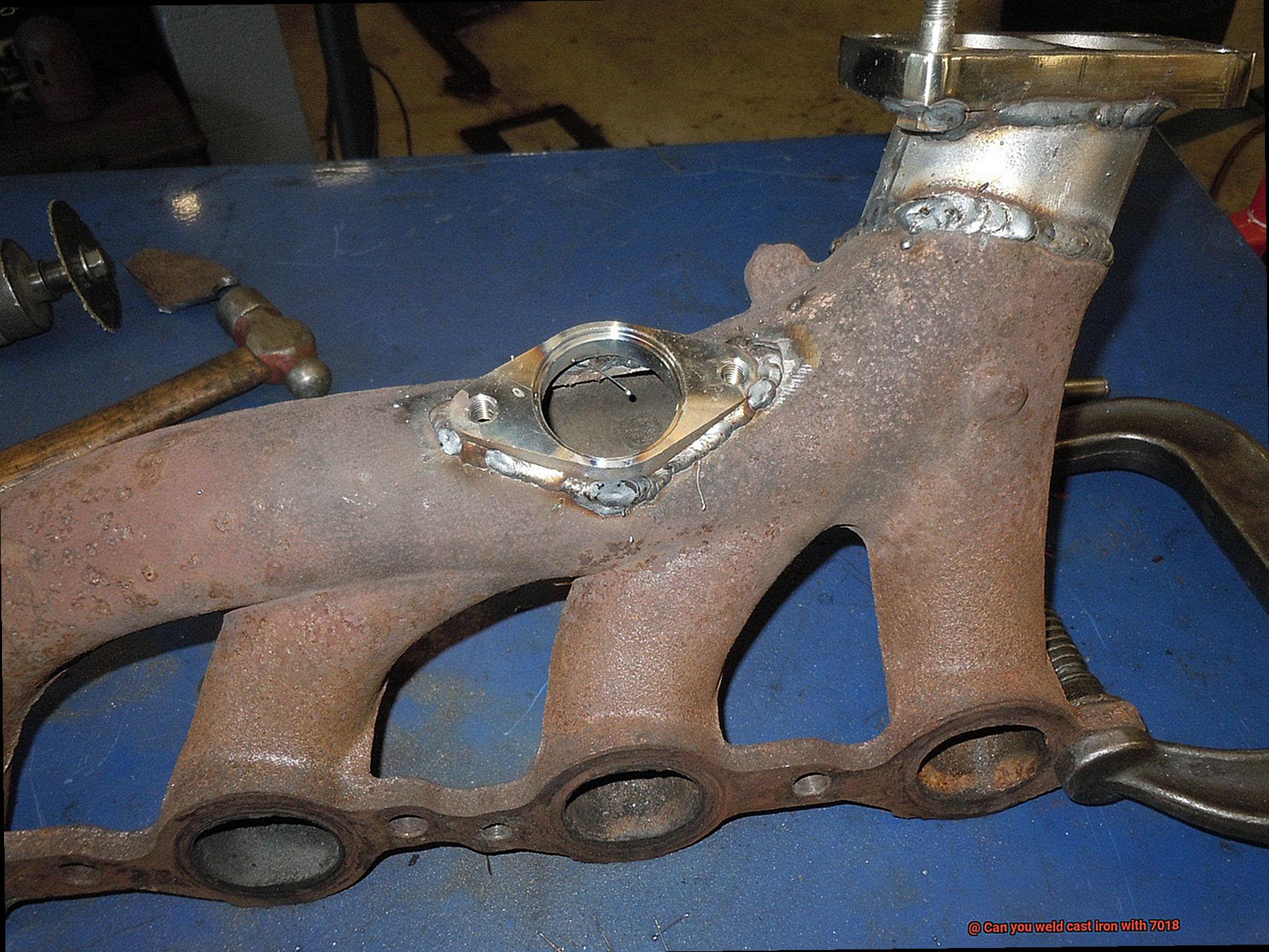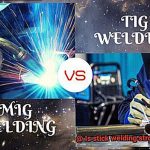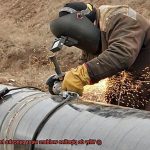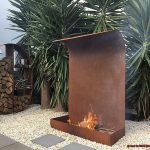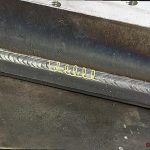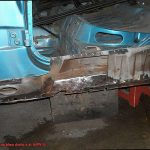Are you wondering if you can weld cast iron with 7018? The answer is yes. With the right rod and a few tips, you can make strong, secure connections that will last.
Welding cast iron with 7018 is simple and doesn’t require any special tools or equipment.
It also gives a nice finish, so there’s no need for additional work after welding.
However, it’s important to use the right rod – low-hydrogen or stainless steel rods specifically made for welding cast iron.
Additionally, preheat your material before welding to prevent cracking and warping during the cooling process.
Finally, take your time when welding – the competition is a slow and steady winner. With these guidelines in hand, you can begin planning your next project with confidence that your welds will be strong and reliable.
What is 7018 Welding Rod?
Contents
- 1 What is 7018 Welding Rod?
- 2 Benefits of Using 7018 Welding Rod
- 3 What Metals Can You Weld With 7018?
- 4 Can You Weld Cast Iron With 7018?
- 5 Best Practices for Welding Cast Iron with 7018
- 6 Advantages and Disadvantages of Using 7018 on Cast Iron
- 7 Alternatives to Using 7018 on Cast Iron
- 8 Conclusion
- 9 Conclusion
The 7018 welding rod is an essential tool for welders, enabling them to craft strong, attractive connections.
This electrode is made of a combination of iron and carbon, designed for use with both AC and DC power sources.
Its low hydrogen content makes it the perfect choice for welding cast iron and other metals that are prone to cracking.
The 7018 welding rod isn’t just strong, it’s also beautiful.
When used correctly, it produces an attractive bead that adds a unique aesthetic quality to welds.
Think of it like a painter’s brush—it’s the device that helps you create stunning works of art.
Whether you’re joining two pieces of metal together or designing something more complex, the 7018 rod will give you the strength and precision needed to get the job done right.
For welders looking for a dependable and versatile welding rod, the 7018 welding rod is an excellent option.
Benefits of Using 7018 Welding Rod
Welding is a demanding and potentially hazardous profession, so selecting the right welding rod is essential.
The 7018 welding rod is a popular choice for welders of all skill levels, especially for cast iron.
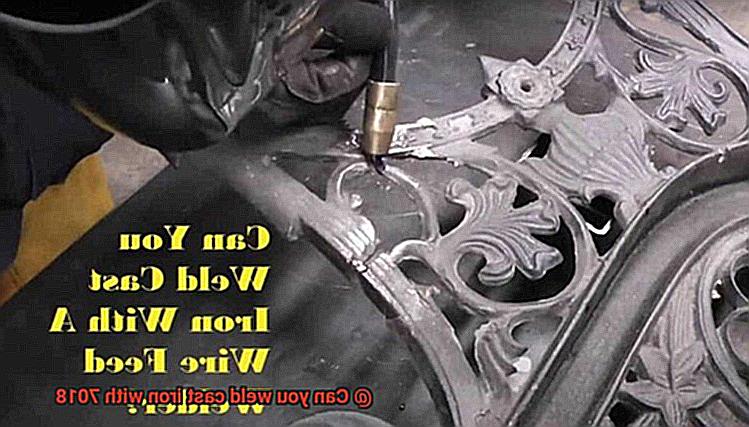
It creates strong, dependable welds and is also easy to use in all positions.
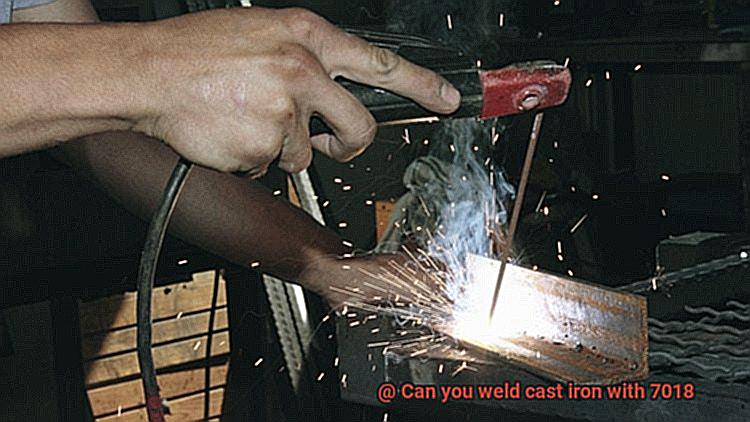
The 7018 welding rod has an increased tensile strength than other rods, making it ideal for heavier applications.
It also produces less smoke and spatter, which speeds up the welding process and makes it more efficient.
This welding rod can be used on a wide range of metals, such as steel and stainless steel.
Furthermore, it’s highly affordable and widely available – you can always find it when you need it.
What Metals Can You Weld With 7018?
This general-purpose rod is suitable for welding most common metals like mild steel, low alloy steel, cast iron, stainless steel, and aluminum.
It creates an arc with good penetration and a strong, ductile weld that is impact resistant.
Plus, the 7018 rod works best on flat surfaces and can be used in all positions.
Whether you prefer AC or DC current, the 7018 welding rod is compatible with both.
However, it requires higher amperage than other rods so make sure to use it on thicker metals or those with good conductivity.
Can You Weld Cast Iron With 7018?
Welding cast iron with 7018 is a reliable and dependable option for any project.
This mild steel rod produces strong, ductile welds that are crack-resistant and suitable for welding other metals like cast steel and stainless steel.
Preheating the cast iron before welding is essential to reduce the risk of cracking and ensure good fusion.
When using 7018, it’s also important to use reverse polarity (electrode negative).
Welding is an art form, requiring skill and precision to create beautiful welds.
With 7018, you have everything you need to craft a masterpiece that is both beautiful and dependable.
Best Practices for Welding Cast Iron with 7018
Welding cast iron with the 7018 rod requires the right techniques to create strong, beautiful welds.
Here are some of the best practices for welding cast iron with a 7018 rod to help you get started.
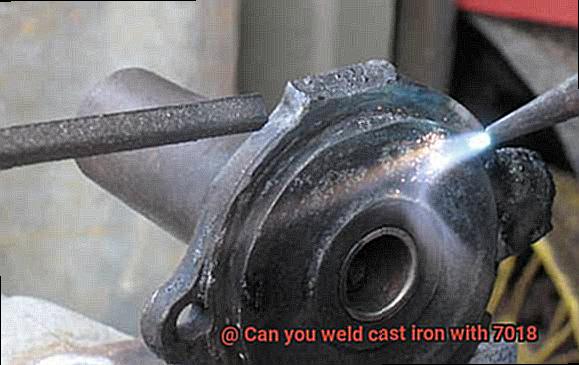
First and foremost, preheat the cast iron before welding with the 7018 rod.
This will reduce the risk of cracking and ensure that your welds are reliable.
To avoid overheating and warping the material, use a low amperage setting.
It’s also essential to clean off any rust or debris from the surface before welding with the 7018 rod.
A flux-cored 7018 rod is recommended for increased penetration and strength when welding cast iron.
When welding outside, an appropriate shield gas can be used to reduce porosity in your welds.
Additionally, keep your arc length short and consistent for better control and accuracy when welding with a 7018 rod on cast iron.
Finally, once your welds have cooled down completely, use a chipping hammer to remove slag from them before grinding them down for a smooth finish if desired.
Advantages and Disadvantages of Using 7018 on Cast Iron
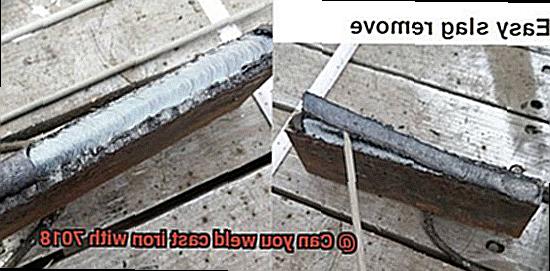
Welders often turn to 7018 when working with cast iron, and for good reason.
This low-hydrogen rod has a high melting point, making it ideal for high temperature applications.
It produces strong welds with good penetration and minimal slag, making it an excellent choice for welding both thin and thick sections of cast iron.
However, while 7018 is a great option for welding cast iron, there are some drawbacks to consider.
For one, 7018 requires a higher amperage than other electrodes, which can be difficult to achieve when welding thin sections of cast iron.
Additionally, the slag produced by 7018 can be tricky to remove, leading to porosity and other defects in the weld.
Finally, 7018 is more expensive than other rods, so it may not be the best choice for those on a budget.
Despite the drawbacks, 7018 remains one of the most popular options for welding cast iron due to its impressive strength and durability.
Alternatives to Using 7018 on Cast Iron
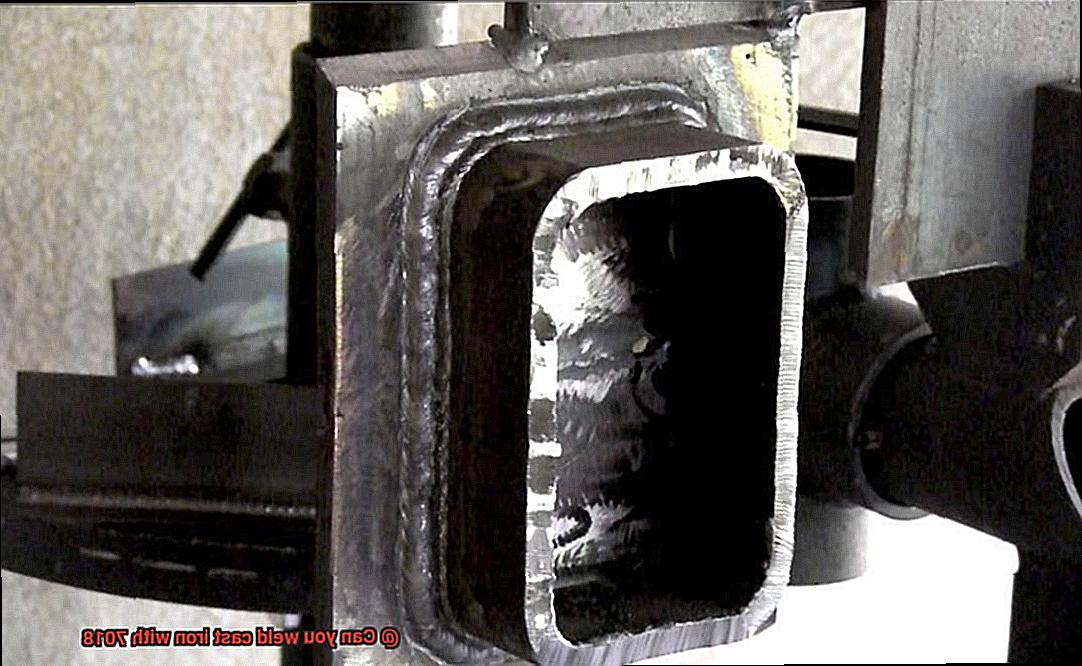
When it comes to welding cast iron, the 7018 rod is one of the most popular choices.
But if you’re looking for something different, there are a number of alternatives that may be better suited to your project.
For instance, 6011 rods have a deep penetrating arc that makes them ideal for cutting through rust and mill scale with ease.
Meanwhile, 6013 rods produce a smooth and stable arc with minimal spatter, perfect for those seeking a clean finish.
7014 rods also offer excellent penetration and high deposition rates for welding cast iron.
Alternatively, flux cored wires are an easier option than solid wire electrodes and can be used without an external shielding gas.
Finally, gas metal arc welding (GMAW) is another great option when it comes to welding cast iron.
It’s less sensitive to contamination than other processes and delivers good weld quality in an easy-to-use package – like a breath of fresh air on a hot summer day.
Conclusion
Welding cast iron requires a thoughtful approach and careful planning.
But it doesn’t have to be intimidating. With the right tools and techniques, 7018 rod can be an effective way to weld cast iron.
Not only is it versatile and reliable, but it’s also relatively easy to use.
When welding with a 7018 rod, always take safety precautions and use the correct technique.
Make sure you understand the basics of welding before attempting any project.
Additionally, make sure you’re using the right equipment for the job—the wrong tools can lead to disastrous results.
In conclusion, 7018 rod is a great option for welding cast iron.
If you take the time to familiarize yourself with proper technique and safety protocols, you’ll be well on your way to achieving beautiful welds in no time. So don’t wait—get out there and start welding.
Conclusion
Welding cast iron with a 7018 rod is an achievable and reliable task.
With the right tools and techniques, you can make strong, beautiful welds that will last for years.
Whether you’re a beginner or an experienced welder, the 7018 rod will give you the confidence and precision you need to get the job done properly.
Remember: slow and steady wins the race. Before welding, clean off any rust or rubble, preheat your materials and use reverse polarity (electrode negative).
Additionally, keep your arc length short and consistent for greater control and accuracy.
With these tips in mind, you’ll be well on your way to creating stunning cast iron welds from scratch.
